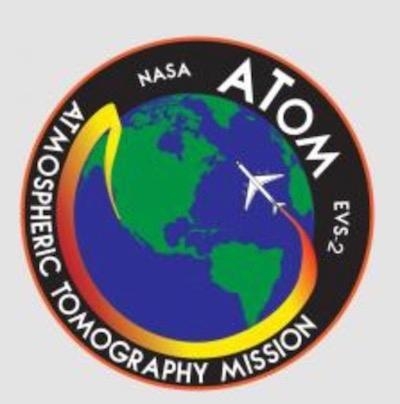Mon, Mar 26, 2018
Flights Scheduled To Begin In Late April
Since 2016, NASA's Atmospheric Tomography (ATom) mission has studied pollution and greenhouse gases in the atmosphere with the agency's DC-8 flying laboratory. Scheduled to begin in late April, the missions final 26-day journey will take researchers over the North Pole, across the Pacific Ocean to New Zealand, and on to the tip of South America before flying over the Atlantic to Greenland and returning to California.

ATom measures more than 200 gases and airborne particles in the atmosphere over the oceans to better understand how gases, such as methane, and ozone and airborne particles, such as black carbon, enter, transform and are ultimately removed from the atmosphere. These processes are key components of Earth's air quality and climate.
The mission complements NASA's satellite observations of the major gases of Earth's atmosphere. ATom deploys an extensive gas and aerosol payload on the NASA DC-8 aircraft for systematic, global-scale sampling of the atmosphere, profiling continuously from 650 feet to 7.5 miles in altitude. Flights originate from the Armstrong Flight Research Center in Palmdale, California, fly north to the western Arctic, south to the South Pacific, east to the Atlantic, north to Greenland, and return to California across central North America. ATom establishes a single, contiguous global-scale data set. This comprehensive data set will be used to improve the representation of chemically reactive gases and short-lived climate forcers in global models of atmospheric chemistry and climate. Profiles of the reactive gases will also provide critical information for validation of satellite data, particularly in remote areas where in situ data is lacking.
ATom’s tomographic, large-scale sampling combined with parcel-by-parcel quantification of photochemical tendencies provides a strong response to the 2011 NASA Strategic Plan to Advance Earth System Science: meeting the challenges of climate and environmental change on a global scale.
ATom improves predictions of human-caused and natural changes in climate forcing and air quality over the entire globe, engaging the science Focus Areas: Atmospheric Composition (primary); Carbon Cycle and Ecosystems (role of CH4), and Climate Variability and Change (radiative forcing of CH4 and O3).
(Source: NASA news release)
More News
Decision Altitude (DA) A specified altitude (mean sea level (MSL)) on an instrument approach procedure (ILS, GLS, vertically guided RNAV) at which the pilot must decide whether to >[...]
Aero Linx: T-34 Association, Inc. The T-34 Association was formed in July 1975 so that individuals purchasing then military surplus T-34As had an organization which would provide s>[...]
As He Released The Brakes To Begin Taxiing, The Brake Pedals Went To The Floor With No Braking Action Analysis: The pilot reported that during engine start up, he applied the brake>[...]
“Legislation like the Mental Health in Aviation Act is still imperative to hold the FAA accountable for the changes they clearly acknowledge need to be made... We cannot wait>[...]
Also: IAE Acquires Diamond Trainers, Army Drones, FedEx Pilots Warning, DA62 MPP To Dresden Tech Uni The danger to the flight training industry and our future pilots is clear. Dona>[...]
 ANN's Daily Aero-Term (12.08.25): Decision Altitude (DA)
ANN's Daily Aero-Term (12.08.25): Decision Altitude (DA) ANN's Daily Aero-Linx (12.08.25)
ANN's Daily Aero-Linx (12.08.25) NTSB Final Report: Piper PA-31T3
NTSB Final Report: Piper PA-31T3 Aero-News: Quote of the Day (12.08.25)
Aero-News: Quote of the Day (12.08.25) Airborne-Flight Training 12.04.25: Ldg Fee Danger, Av Mental Health, PC-7 MKX
Airborne-Flight Training 12.04.25: Ldg Fee Danger, Av Mental Health, PC-7 MKX



